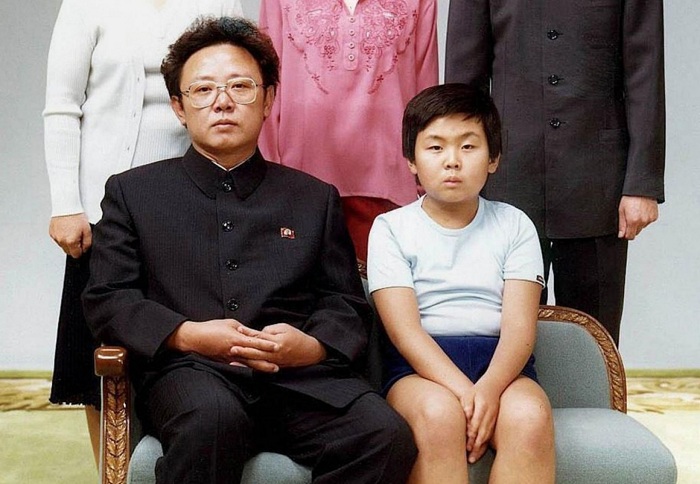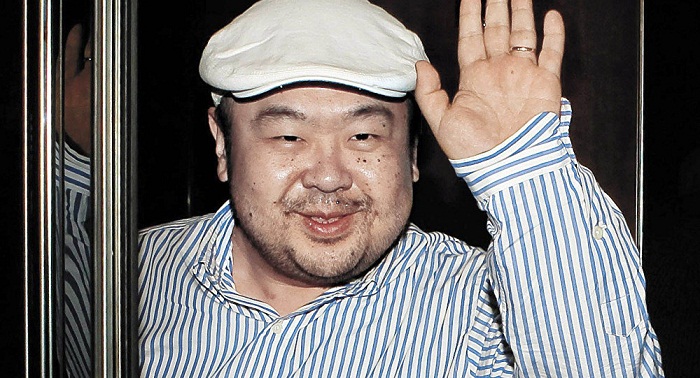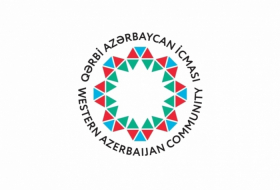Here are some of the few details we know about him:
He had a peripatetic early life.
Kim Jong Nam was born on May 10, 1971 — not on June 10, 1970, as the passport he was carrying when he died stated.
He was the son of Kim Jong Il, a film fanatic, and Song Hye Rim, a leading actress at the North Korea Film Studio who divorced her husband to live in secret with the future leader, according to the North Korea Leadership Watch website.
He spent his early years living with his mother’s relatives in Pyongyang, but was taken to Moscow when he was 8 years old — and when North Korea and the Soviet Union were still firm Communist friends.
He then spent most of the 1980s going back and forth between international schools in Moscow — where he expressed his displeasure at the state of the bathrooms — and Geneva. While there, he learned French and German, and spoke English well with reporters who accosted him on the street on occasion.
He returned to Pyongyang in 1988, when he was almost 18, and became a cadre in the Ministry of People’s Security, North Korea Leadership Watch says. He also became very close to his aunt — Kim Jong Il’s sister — and her mercurial husband, Jang Song Thaek.
From start to end, Kim Jong Nam’s existence was a secret in North Korea.
Kim Jong Il’s relationship with Song Hye Rim was kept secret — founding president Kim Il Sung did not approve — and so was their son’s existence.
Kim Jong Nam’s aunt and guardian, Song Hye Rang, defected in the late 1990s and wrote a memoir called “The Wisteria House.”
“Words cannot describe how deeply Jong Il loved his son,” Song wrote of the period immediately after Kim Jong Nam’s birth. “The young prince rocked his fretting son on his back to sleep, carried him until he stopped crying, and mumbled to the baby the way moms calm a crying baby.”
But he was sent away to school in Moscow and Geneva, spending most of his childhood there with Song and her daughter, his cousin. She described Kim Jong Nam’s loneliness when he returned to Pyongyang as “a fully grown-up gentleman” at age 18, together with his cousin.
They weren’t allowed out in Pyongyang and were seldom allowed to go to Wonsan, where the Kim family had a sea-front compound. “It was more than once or twice that we had experienced the sorrow of being on the vast empty beach, where only the two children and drivers were moving,” she wrote.
But Kim Jong Nam’s feeling of emptiness was really growing because his father was “in the processing of abandoning” him, Song wrote.
“His father started a new life with another woman and had more sons and daughters. He transferred his abnormal ‘tearful love’ for Jong Nam to his new children,” she wrote. These included Kim Jong Un and his siblings.
Kim Jong Nam has never been mentioned in the North Korean media, and, even today, only a handful of elite North Koreans will have known of his existence.
He was involved in North Korea’s IT industry.
While at a university in Switzerland, Kim Jong Nam is said to have taken a keen interest in technology. In 1998, after he had returned to Pyongyang, he was appointed to the state Computer Committee, where he was responsible for a number of technology initiatives, North Korea Leadership Watch reported. He also facilitated use of the country’s “intranet,” a system that local officials and students can use but that is not connected to the outside world.
For a North Korean, he traveled a lot.
Following his fall from favor in 2001, when he was caught sneaking into Japan on a fake passport with an alias that meant “Fat Bear” in Chinese, Kim had essentially been living in exile — whether self-imposed or forced.
For many years afterward, he lived in Macau, a Chinese territory near Hong Kong, where he and his wife had children.
Like his father before him, Kim Jong Nam reportedly has at least six children with several different women whom he lived with at various stages, according to North Korea Leadership Watch.
He was also thought to have had a residence — and another family — in Beijing, and frequently went through Singapore. North Koreans do not need visas for China or Malaysia, or for Singapore until recently.
North Korea experts and Japanese journalists had spotted him in airports and hotels around Southeast Asia.
Kim Jong Nam ate at an Italian restaurant owned and run by a Japanese businessman in Jakarta, Indonesia, in 2014, even posing for a photo with him. This was reported on South Korean television at the time.
But he also traveled to Europe, being spotted in Paris on numerous occasions. In 2014, he was seen with a woman in her 30s.
He had also been spotted there in 2008 and 2009, apparently trying to secure French medical attention for his ailing father, who had suffered from brain hemorrhages.
On most occasions, he was unshaven and wearing decidedly un-North Korean clothes, like jeans, leather jackets, sunglasses. On one occasion, a South Korean TV crew filmed his Ferragamo loafers.
He is known to have returned to North Korea only once since his younger half-brother, Kim Jong Un, took over the family business when their father, Kim Jong Il, died at the end of 2011. That was for their father’s funeral, although the two men are not thought to have met at that time.
His father wanted him left alone.
In his last will and testament, dictated just months before his death, Kim Jong Il outlined policy prescriptions for Kim Jong Un, his successor, to adhere to, leadership expert Ken Gause wrote in “North Korean House of Cards,” a book on leadership in the Kim Jong Un era.

But Kim Jong Il also “urged that Kim Jong Nam be left alone and not targeted or harassed by the regime,” according to the will, which Gause said he obtained in 2012 through defector sources.
South Korean intelligence officials had contended that Kim Jong Un, while director of the State Security Department in 2009 and while their father was still alive, had ordered a raid on Kim Jong Nam’s vacation home and had several of his older half-brothers and associates arrested.
He has a very international son.
Kim Jong Nam’s most prominent child is Kim Han Sol, who grew up in Macau, attending international schools and having a wide range of friends. He attended the United World College in Bosnia and while there, in 2012, gave an interview to a Finnish TV in which he spoke perfect American English and wore a diamond earring.
He described living in a dormitory and how his roommate was a Libyan — one who had been very happy about the revolution that toppled Moammar Gaddafi.
Kim Han Sol said he had never met his uncle, Kim Jong Un. “I don’t really know why he became a dictator,” he said. “It was between him and my grandfather,” he said, referring to second-generation leader Kim Jong Il.
After Bosnia, he studied at Sciences-Po in Paris.
Pascal Dayez-Burgeon, a North Korea expert who served as a French diplomat in Seoul between 2001 and 2007, said that Kim Han Sol had two bodyguards in Paris “to make sure he will not be abducted by the regime.”
He had doubts about the North Korean system.
Despite his international travel, Kim had been keeping a low profile except for a few notable occasions in which he spoke to Japanese media and appeared to question the legitimacy of North Korea’s system of hereditary succession.
Kim Jong Nam was close to his uncle, Jang Song Thaek, a proponent of economic opening in tightly closed North Korea. Jang had been involved in numerous business deals in China, including opening special economic zones on the border between North Korea and China.
During the late 1990s, while he was still in Pyongyang, Kim Jong Nam had also reportedly been in favor of loosening North Korea’s hermetic border controls and allowing more North Koreans to travel.
More about:
















































